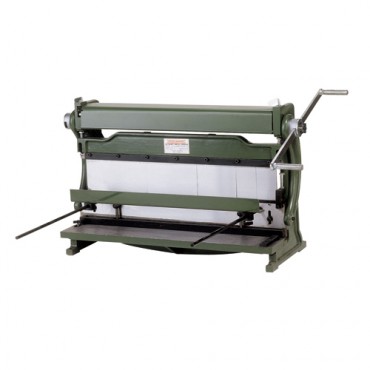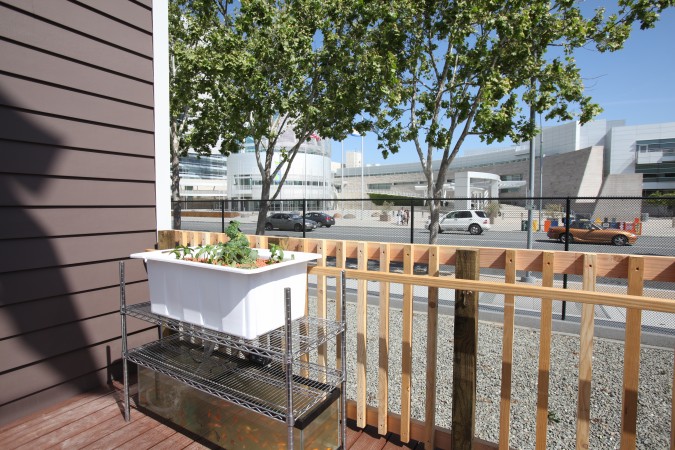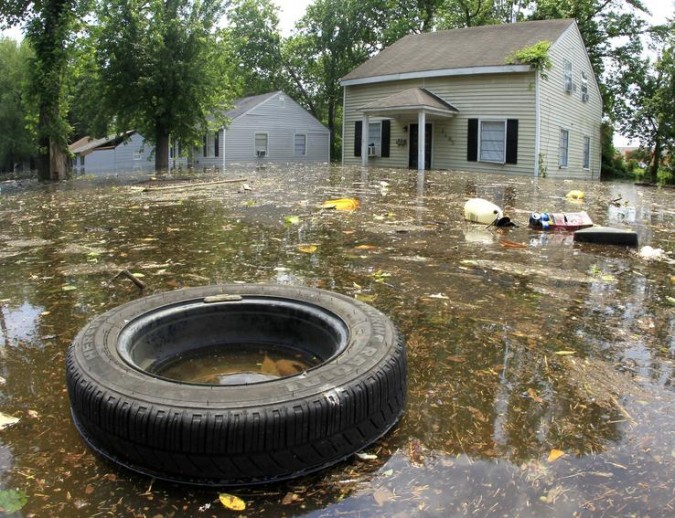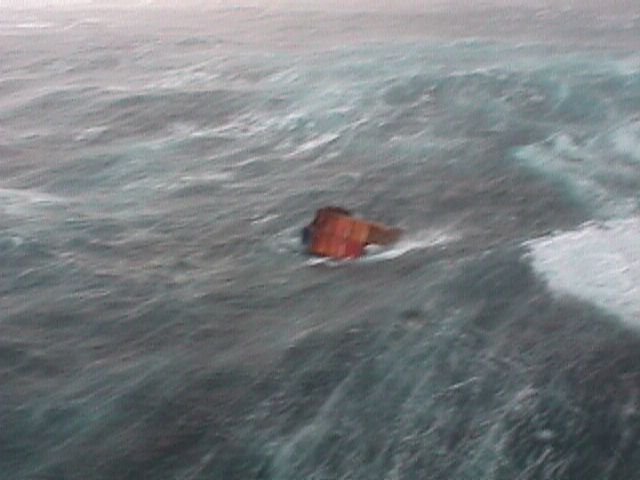Archive for the ‘Shipping container homes’ Category
I encountered a very unusual used vehicle salesman – Reza Fotoohi of Royal Motor in San Leandro, California
One of the projects I’ve been toying with requires that I own a box truck. I have shelved the project for now, but when I was investigating this project, I had the good fortune to meet Reza Fotoohi, the owner of Royal Motor. Royal Motor is located at 16575 East 14th Street in San Leandro, California, USA.
Fotoohi stands apart from every other used vehicle salesperson I have ever encountered in life, and I’ve met a lot because I’ve only bought used vehicles because I believe that’s the most sound financial way to buy a vehicle.
Fotoohi has a LOT of used trucks for sale. He had a second lot he had to drive me to filled with perhaps 100 trucks, from really old to almost new and from small to huge. He had three trucks that could have been suitable for my off beat project. I liked all of them very much. I dreamed about them for days.
I described my project to Fottohi in great detail, sharing my plans and my vision. He was an astute and careful thinker and conversationalist, I found. We spent perhaps two hours together, talking and measuring trucks and evaluating their suitability. Any of the three trucks would have been suitable for my project.
I am writing this post because Reza Fotoohi advised me to pass on all of his trucks and to keep looking for even a better fit. He took my card and promised to call me when he had a more suitable truck in stock. I took his card.
Fotoohi started this business in 1984, and you can tell it’s his passion and life’s work. He was proud of his expertise and inventory.
You can be certain that when my project gets back on the front burner that my first stop will be at Royal Motor. You can’t help but think highly of Fotoohi for putting my project coming out well ahead of his making a sale right now. I have no idea if his trucks are good or bad, but with this uncommon display of ethics, I suspect his trucks are worth what he charges. I found Royal Motor on Craigslist, which Fotoohi’s a huge fan of. He advertises exclusively on Craigslist now, and was able to cut his advertising expenditures of USD $30,000 per year by canceling his contracts with websites that charged for listings. That’s money going right into Fotoohi’s pocket I suspect, and Craig Newmark, Jim Buckmaster and their team at Craigslist should be so proud that their website allows such beneficial outcomes on a world scale.
If you need a used truck, please visit Royal Motor and tell Mr. Fotoohi that I sent you.
Tiny house created from a shipping container
I’ve been dreaming since 2008 or 2009 of creating ecologically conscious homes from ocean shipping containers. I independently came up with the idea of using shipping containers to make eco homes. I soon discovered others thought of doing so many years earlier. I arrived at the idea after reading about Tumbleweed houses, which I love.
In late May 2011 I learned of a company that’s already creating backyard cottages from recycled shipping containers. I found out about HyBrid Architecture Assembly by listening to KQED radio, the National Public Radio affiliate in San Francisco, California USA, where I live.
One of the sponsors of KQED is Sunset Magazine, and each year that home and garden periodical puts on an event at its Menlo Park, California headquarters. Menlo Park is about a 45 minutes drive South of San Francisco. Sunset Magazine advertised its Sunset Magazine Celebration Weekend 2011 show this year by adding the tantalizing news that a ‘shipping container house’ would be on display.
I have never been to a Sunset Magazine event, but this year I attended.
I was impressed by the interest in the displayed shipping container house — the line to tour the home was a city block long at times, as you can see in the photo above. I would say this container house was the most popular attraction at the show except for the Ikea cooking stage, where I estimate over a hundred people could sit at once to watch a live cooking show in a real outdoor Ikea kitchen set up just for the event.
With the intent to blog about it, I took some pictures of the container home and shot an exterior video clip, walking around the perimeter of the house once.
One of the owners of HyBrid didn’t seem to appreciate my enthusiasm for his company’s product, and asked me on video what architecture firm I was with. When I told him I was a blogger, he asked for my card. I don’t carry a blogger card yet, so I gave him my photographer card.
I ran into this same owner at the PCBC building industry trade show at Moscone Center June 22-24, 2011.
The HyBrid owner saw me in the hallway, recognized me and asked me again for my contact information. He handed me his cell phone and asked me to key in my cell number, which I did. He asked me to stop by his shipping container home, the Sunset display model which was now on display at PCBC. He said he had a proposal for me.
I was surprised, as I didn’t see how he knew enough about me to propose anything. But since I had given him my card at the Sunset show, I thought perhaps he had been reading my blog and had learned I’m fascinated by shipping container homes. I was looking forward to making a new friend.
Later that afternoon, I stopped by the container house and the owner asked me to sit down at one of the chairs in the garden.
I started off by introducing myself, and told him I do not build and have decided not to build shipping container homes.
The owner then explained his company’s designs are copyrighted and that if I copied them he would… at which point he stopped his sentence, leaving me to guess the rest of the sentence. My best guess is: “sue me for copyright infringement.”
He said that the designs for his house took 10,000 (sic) hours to create and perfect. He claimed that the tolerances in the specifications are so tight that in some places if an item were moved by just 1/4 of an inch that the house would not pass building inspections. He went into detail about the sliding ‘barn door’ made from metal that hangs from a track above but does not run in an opposing track at the base. He said that design is the only way to pass code, as inspectors worry a bottom track will trip people passing through the barn door.
I was shocked.
I had told him up front I was specifically not going to start a shipping container housing company, yet he still felt threatened enough that he intimated he would pursue legal action against me if I used his company’s plans, which I did not and do not have.
This was the first and only time I have been so overtly threatened in business, even though he was somewhat covert.
What is particularly curious about this encounter is that I don’t believe that a US Copyright would prevent anyone from manufacturing exact or similar copies of a house. I think multiple United States patents would be required, both design patents and utility patents.
Design patents, to my knowledge, are easy to get around. I think that’s why so many different companies are able to legally make smart phones that look very similar to the iconic Apple iPhone. If there were a legal form of protection to stop these similar looking phones, I have no doubt that Apple would vigourously pursue such protection.
I am 99.9% sure I am correct that a US Copyright is of no value in keeping me or anyone from making houses like those made by the company that is the focus of this post. If I learn otherwise, I will write a follow up to correct this post.
This owner said he earlier had visited my blog and noted I had not posted anything about his company. He asked me not to post anything about his company.
I asked him if I could write about his company if I sent him the copy in advance for his approval, and he said I may.
I have reflected on this strange encounter for a over a month now, and I have decided that I will not write the enthusiastic and favorable piece I had planned to write before this encounter.
I consider myself a journalist, as I have written here before, so I strive to write posts that reflect the truth.
I think that the owner did not handle me well. From the moment he encountered me at the Sunset event, I identified myself as a blogger, so I am perplexed that he did not act with particular restraint, even if he was worried I might some day ‘compete’ with his business in Seattle, Washington, two states away from California, where I live.
I was a fan and was planning to write a really nice article, with high quality photos and video. There aren’t too many independent blog stories about his shipping container house, and I would think he would be thrilled to have someone like me write about it. Instead, what he now has earned is a not so nice article that raises questions.
In my mind HyBrid should welcome press coverage and competitors with open arms, as I believe the field of container housing suffers from its poor visibility. More companies in more locations advancing the concept can only help the cause.
The best thing that could happen to HyBrid is for hundreds of vibrant and profitable companies to spring up making homes from shipping containers.
I continue to be interested in shipping container homes, but I can’t take on creating a manufacturing company right now, as I am too busy with my current company, my chickens, my fish, my garden, my photography and my social life.
I don’t want to tangle with HyBrid, so I have deliberately not linked to their site or named the division that actually makes the house in question. I also have not named the founder, out of concern for his venture. I want him and his company to be wildly successful. I would be thrilled if he sells a million units a year.
The lesson of this strange encounter:
Do not try to intimidate journalists and/or potential competitors you should be making friends with and encouraging.
Environmental education center may be constructed with shipping containers
I am a fan of the website Grist because a few weeks ago the editors linked to my blog post The Cube Project – a net zero tiny house in the United Kingdom from their front page.
Many people visit Grist, and I was fortunate to receive a lot of traffic. Thank you Grist.
I wasn’t familiar with Grist until they started sending me lots of visitors. I looked around the site and found some gems, including a brief piece about a Los Angeles think tank that has developed plans for an environmental education center. The center would be built from shipping containers that are not at right angles to each other, as you can see in the computer model above. This ranks this project in my mind as the craziest shipping container project I’ve yet encountered.
Here’s a snippet of what Grist has to say about the wacky concept illustrated in the above graphic.
An LA-based design think tank called APHIDoIDEA has an idea about how to build an environmental education center that practices what it preaches. They imagined an Environmental Center of Regenerative Research & Education — or eCORRE — Complex that would teach visitors about green ideas like solar energy and passive cooling techniques. It would have classrooms, offices, an exhibition hall and a public plaza. Here’s the cool part: the building would be made of 65 shipping containers.
Read more and see more pictures on Grist.
I used a chain hoist for the first time
I’ve been aware of chain hoists for most of my life. Today for the first time I used a chain hoist — a very useful device.
I didn’t think I had a need for a hoist. I once thought I needed one so I could lift boxes into the attic for storage. It turned out it was practical to carry the boxes up a ladder, so I donated to Goodwill Industries of San Francisco the electric Harbor Freight hoist I had purchased for the attic project.
Yesterday I discovered I had a new and immediately pressing need for a hoist. I regretted I had donated the brand new electric hoist to charity. But after today, I am thrilled I donated the electric hoist, because I now know the wonders of a manual hoist.
I paid about USD $40.00 for a brand new 1 ton Harbor Freight chain hoist. This weighs 22 pounds — I received tremendous value for my money. The hoist was on sale for $44.95 but I had a 20% off coupon that brought the price down.
I needed a hoist because yesterday I bought a heavy machine tool that weighs 300 pounds. The staff at Harbor Freight in Pleasant Hill, California loaded it into my car trunk. They had a hydraulic scissor lift table to wheel the machine to the edge of my trunk lip, and then they just tilted it in, without having to ever really lift it.
When I got home, even with three of my roommates helping, I could not safely remove the machine from my trunk. I became scared we might drop it on our feet, so I called off the attempt once I fully appreciated just how heavy 300 pounds is, particularly when it’s in a large wooden crate you can’t really grasp. Thank you to my roommates for trying to help me. I appreciate your willingness to help and your enthusiasm for living here.
I headed back to Harbor Freight with the crate still sticking out of the trunk at 45 degrees.
I got the hoist, a D anchor with a 10,000 pound limit and some lashing straps. I used two 4 inch 1/4 x 20″ lag bolts to screw the D anchor into a 2 x 12″ floor joist in my garage. I positioned my trunk directly under the anchor and hooked the hoist the the D anchor. Then I wrapped two lashing straps around the wooden crate and hooked them over the hoist load hook.
With a full face protective shield on, I pulled on the ‘up’ chain. For every foot of travel of this chain, I estimate the load chain moved about half an inch.
What’s so great about a chain hoist is you can safely let go at any time and the load will not fall. To lower the load, you pull slightly on the ‘up’ side of the chain and then begin to pull the ‘down’ side of the chain. You can let go at any point and the load will stay put.
I pulled the box all the way out of the trunk and then drove the car forward a few feet. I returned to the hoist and lowered the crate to the floor and detached the hoist. I didn’t need to bother my roommates at all, and I felt safe during the entire process.
I will leave the D anchor attached the ceiling in case I ever need to lift anything else out of my trunk.
I plan to keep the hoist, as it will no doubt be useful for some of the projects I’ve been dreaming about building.
I’ll write a separate post about the heavy machine tool I now have in my garage.
I’ve written about Harbor Freight before.
Harbor Freight is a magical tool store that inspires me to try to do great things. Home Depot and Lowes as tool stores are pathetic. Of course those large retailers sell mostly items that are not tools, so I still do shop at those stores more often than I like to admit.
Please subscribe to my blog. There’s a subscribe box above and to the right. You may also follow me on Twitter and friend me on Facebook. Thank you.
I’m attending Ramp It Up, a fundraiser by SFMade.org
I’m considering manufacturing self contained green homes in San Francisco, California. I don’t know much about the manufacturing business, and I have few contacts in the industry. To help fix that, I’m going to the first SFMade annual fund raiser tonight.
SFMade is a new trade organization that formed to promote the interests of companies that manufacture physical goods in San Francisco.
I first wrote about SFMade on Feburary 28, 2011.
Here’s the link to the event page for this SFMade event, titled Ramp It Up.
The ticket price is USD $45.00, of which USD $25.00 is tax deductible under US tax laws.
I built my first aquaponics system – you’ll never guess where it is
I’ve written about my friend Kevin Casey a few times before (January 7, 2011, January 9, 2011 and January 11, 2011). I met him in 2007 when he was one of the student organizers for the University of California Berkeley Business Plan Competition. I was a judge and financial sponsor for that competition, so we had plenty of opportunities to talk. We became friends on Facebook, and when he started posting status updates about his startup New Avenue, Inc., I got back in touch with him.
Kevin staged the ribbon cutting for his first house on January 8th, 2011. Soon after, the city of San Jose, California contacted Kevin and asked that he construct a custom house for a 9 month exhibit of green technologies called the San Jose Green Vision Clean Energy Showcase. This exhibit opened this month, in May, 2011. The location is directly across the street from the sparkling City Hall of San Jose.
Here’s the PDF brochure that San Jose is distributing about its Clean Energy Showcase.
Ever since I contacted Kevin in late 2010, I have been talking his ear off about my ideas for shipping container based green housing. One of the parts to my grand plans is to make it practical for residents to grow food at home. The most exciting and productive way to grow food in limited space with limited water is to raise fish and vegetables in symbiotic harmony. This technique is widely known by the word ‘aquaponics.’
Kevin approached me and asked if I’d like to set up a small demonstration aquaponics system on the front porch of his New Avenue demo green home. I jumped at the chance, as this gives me a great excuse to learn more about this and help a friend at the same time. Aquaponics is really popular in Australia, which is in the midst of an 11 year draught. Aquaponics systems use 1/10th the water required to grow vegetables in dirt. Since the world is ‘running out’ of fresh water, it makes sense to learn more about a system that makes such efficient use of water.
I put together a system with off the shelf parts I selected and modified personally. The result doesn’t look bad, but doesn’t look like a commercial polished product either. I am happy with the result for my first system. I used a wire shelf rack from Costco as the frame. I was concerned that infants could drown in a system that didn’t fully cover the water tank, so by setting the height of the first shelf to just over the height of the water tank, I eliminated that risk. You can see this safety feature in the picture above.
The water aerator and the timer are located in an exterior grade water resistant steel junction box fastened to the rear shelf. From there, the system is connected to a GFCI outdoor outlet on the rear of the house. While you can’t see it in the picture because I hadn’t installed it yet, the fish are fed automatically each day via a timed automatic fish feeder.
The vegetable bed is flooded with a foot of water from the fish tank 24 times a day. The flood/drain cycle takes about 18 minutes, and starts on the top of each hour. The pump consumes just 18 watts during a 15 minute per hour fill cycle. The extra 3 minutes is the time it takes for the growing bed to drain back into the fish tank.
The vegetable roots cleanse the water. Since the vegetables get all the water they can absorb, they grow faster than in dirt, up to 600% faster. The fish also grow faster than normal because they get so much clean and well aerated water. It’s a true win/win scenario. The main inputs are fish food and water to replace what is lost to transpiration and evaporation. On occasion, there are tiny inputs of a teaspoon or so of fluid to adjust the pH to keep everything happy. I understand that this is needed primarily during the first 6 weeks of operation, before the healthy bacteria have established themselves in the clay beads that the plants grow in.
I am no expert, but I’m learning a lot, and I appreciate the opportunity to learn on such a public stage. I’ve already met two people that have seen my system and want one of their own!
To learn more, read Backyard Aquaponics Magazine.
Special thanks to Sylvia Berstein, Founder and CEO of The Aquaponic Source, who helped me set up my first system and sold me some of the key parts. Her store is located in Boulder, Colorado, USA.
Flood resistant homes built from ocean shipping containers
The more I dream about becoming a builder of green homes, the more ideas I come up with.
Today’s crazy idea was inspired by the dramatic 2011 Mississippi River floods now happening.
As I’ve disclosed here before, I want to base my green homes, at least to start, on recycled ocean shipping containers. These containers are strong, waterproof and standardized across the planet. Many companies and private individuals already make homes from shipping containers. I have many spins on the concepts that I think make my plans stand out from other plans I’ve seen.
Unaltered containers are pretty water tight. They are so water tight that when they fall off a container ship during a storm, they float for a while — even months is possible. They are a major hazard for other boats and ships, because they are very hard to spot, as they float so that most of the container is submerged, with only about a foot sticking up out of the water. If a boat hits a floating container, that boat can sink from the damage caused by the impact.
My uncle Gerald Warnock is an avid fisherman. On our most recent fishing expedition, last month, I was telling him about my green housing ideas, and he said floating containers are such a marine hazard that there are plans being discussed to install a ‘fuse’ in the side of containers that will disintegrate when immersed in water. Thus, an overboard container will flood and sink once the fuse disintegrates. This will send the cargo to the bottom, but make water travel safer.
I think it would be better to put a satellite beacon in every container, and have the beacon activate when the container is imersed in water. Then the container location could be broadcast on the Internet, and treasure seekers could go pick up the container. Perhaps there could be a bounty sharing treaty set up so the entity salvaging the container would get to keep half of the value and the original owner would get the other half.
People on land spend hours with metal detectors looking for valuables on beaches and elsewhere. I bet that overnight a mini industry would spring up if there were an electronic map overlay website with dots where floating lost shipping containers potentially filled with valuable new products could be found. In fact, I predict that salvagers would compete and the team with the fastest ship would prevail. I don’t know how ships get public data at sea, but there must be a way to publish container location GPS coordinates via a low cost system that can be accessed while at sea. Since the containers are on the move, one would need up to the minute satellite beacon information to justify spending fuel money to travel to a location where a container is supposed to be. I advocate publishing the contents and declared value of the container’s contents along with the coordinates, so salvagers will be able to gauge whether it’s worth it to make the trip. Environmental groups should like my plan, as sunken containers probably aren’t a good thing.
That’s not my idea I intended to write up in this post… it’s just another one of my ideas I’ve wanted to write up for a while now.
My idea I intended to write in this post is to use the shipping container door as the home door, leaving the weather stripping intact. Yes, I would dress up the door and insulate it, to increase its asthetic appeal. But if I leave the original door, then the home can stay watertight if I make the other openings similarly watertight.
Thus, the windows would have to have shutters that could be closed, and the shutters would need to be water tight like the door. The roof hatch also would need to be water tight, and any openings for plumbing lines, electrical lines and the like also would need to be watertight.
Such watertight products already exist for the maritime industry. The roof hatch on a sailboat is reasonably watertight, and while these cost more than a house skylight, they’re not that much more costly. I doubt a sailboat hatch could withstand water pressure if the container were many feet underwater. So, to combat that threat, I could use a submarine hatch! That should handle whatever pressure develops… Seriously though, I doubt flooded areas encounter flood depths such that marine grade trap doors and hatches would not keep most or all of the water out.
The resident of a green home built as I describe here could weather a flood by just closing the door, the windows and the roof hatch. Even if the home were entirely underwater, it would remain dry inside. I wouldn’t recommend trying to live inside, as the air would run out in short order, of course. But when news of an impending flood is received, it would take just minutes to close up the house and depart for higher ground.
There will be tremendous societal benefit to avoiding the billions of dollars in flood damage that results from our current non-waterproof housing.
Shipping container homes without waterproof doors, windows and roof hatches are already very resistant to earthquakes and tornados. Adding waterproofing is not really much extra work, and I would consider making it standard for all homes in flood prone areas, and an available option for all homes, since flooding is likely to get worse over the next few centuries, and I predict any green homes I make from shipping containers will endure for at least a century. These would not be throwaway mobile homes with a cheap feel from day one. These would be rock solid, nearly indestructible homes to pass down from generation to generation.
When I was touring NIMBY a while back to look for space to build a container home, I saw shipping containers from decades ago, from before their design was standardized by the ISO. These things don’t fall apart. I think a properly designed container home clad in suitable exterior siding like brick or granite could last indefinitely — certainly as long as the centuries old housing one sees in parts of Amsterdam and Paris.










